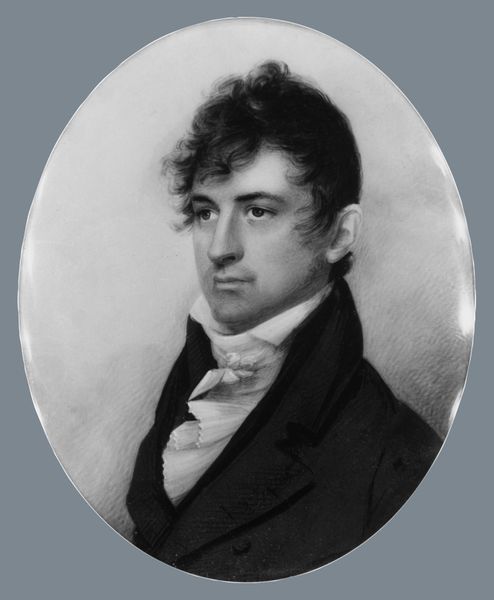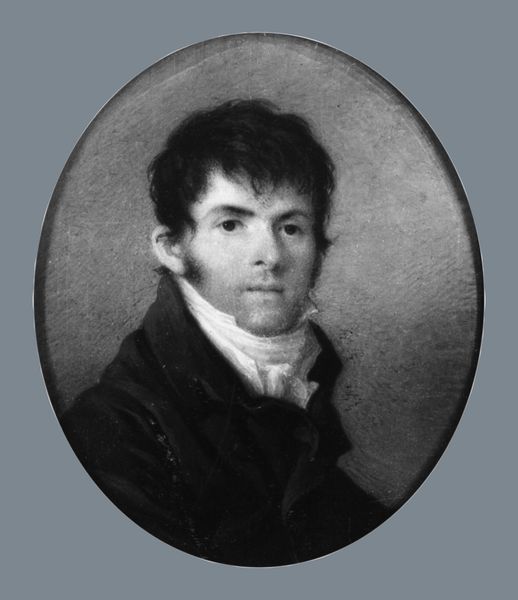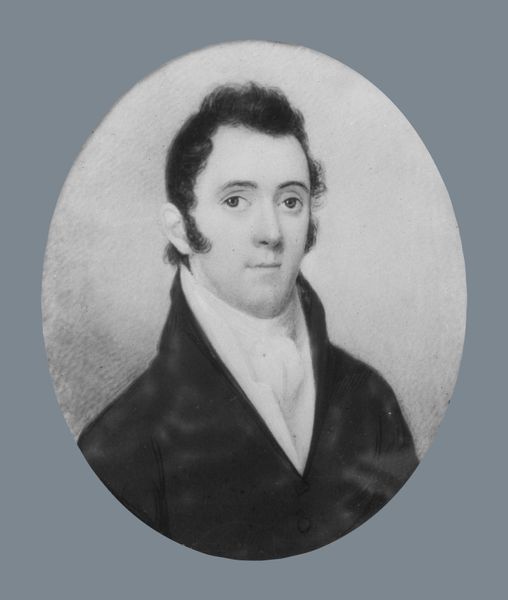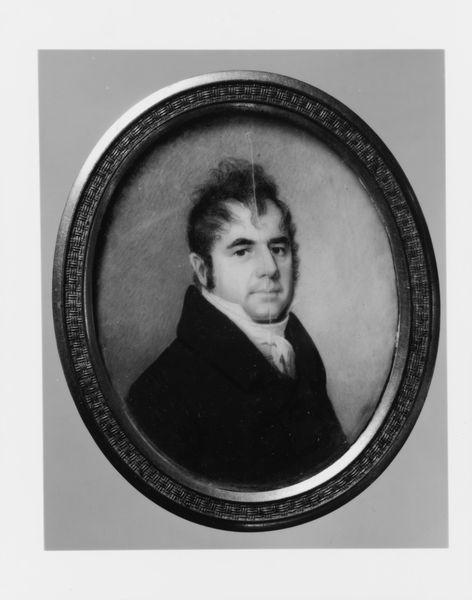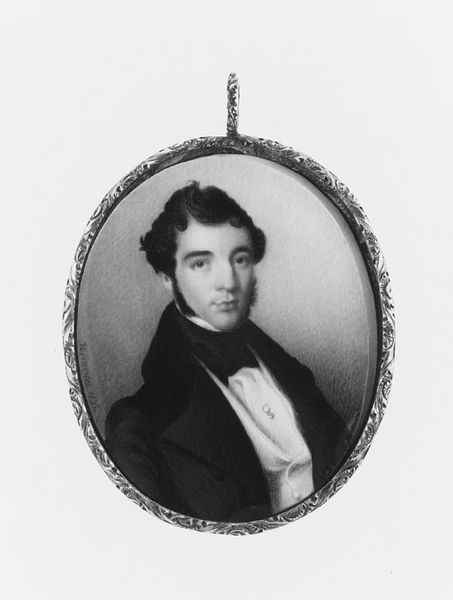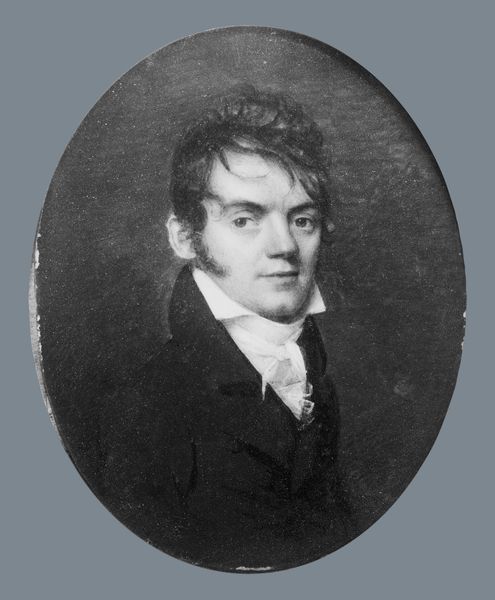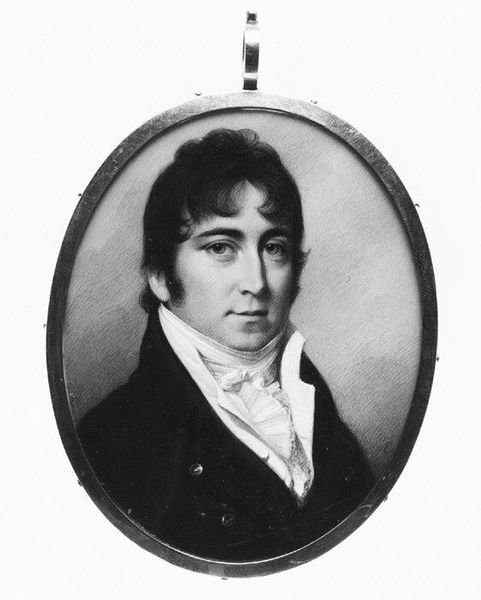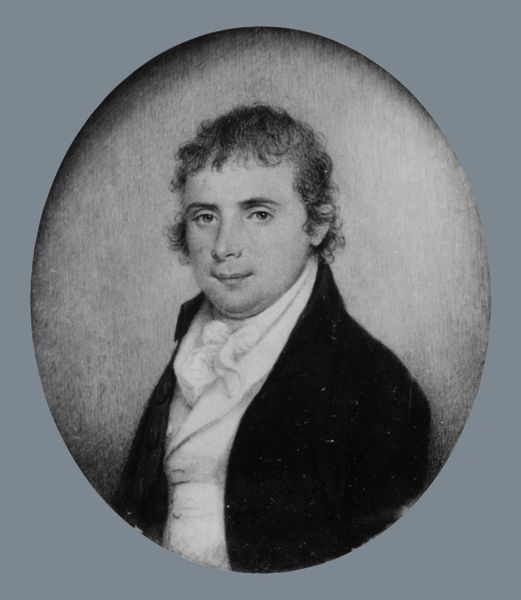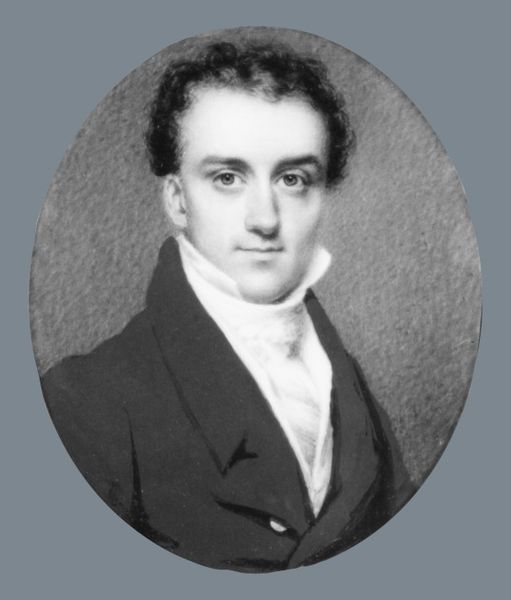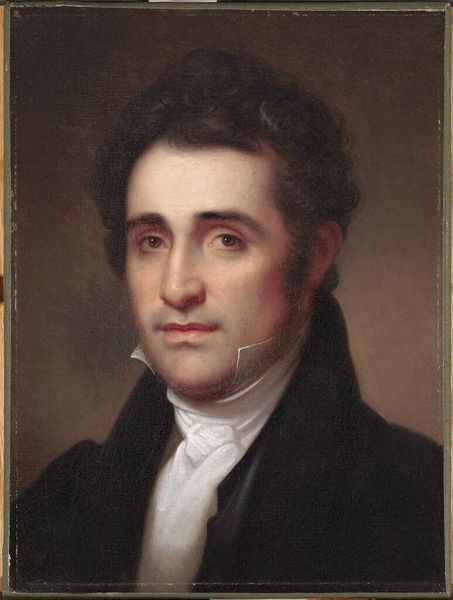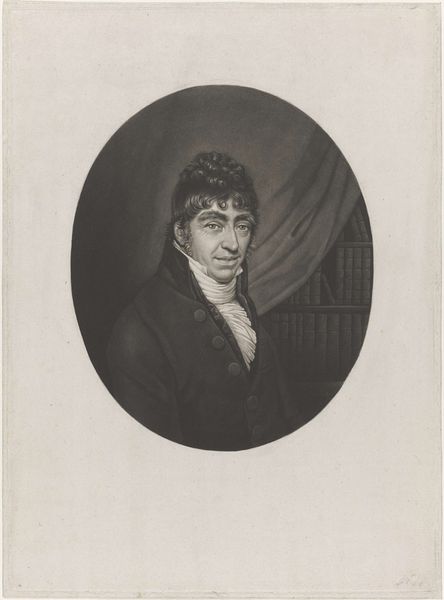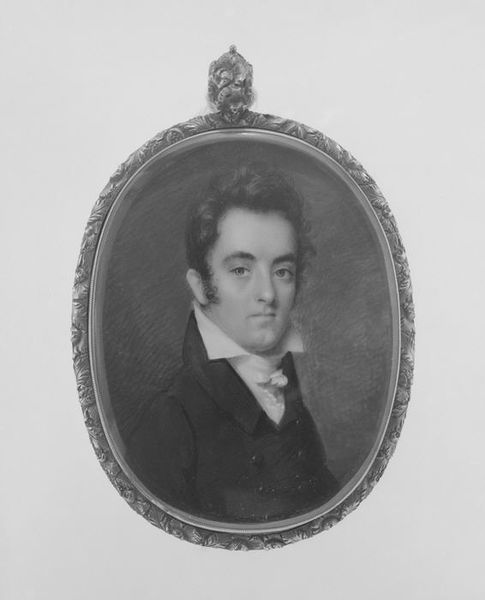
painting, oil-paint
#
portrait
#
self-portrait
#
portrait
#
painting
#
oil-paint
#
romanticism
#
academic-art
Dimensions: 3 x 2 7/16 in. (7.6 x 6.2 cm)
Copyright: Public Domain
Curator: Looking at this oval portrait, I’m immediately struck by the subject's intent gaze and somber presentation, a contrast between elegance and a hint of melancholy. Editor: Indeed. This is "Self-Portrait," created around 1805 by Thomas Gimbrede. What we see here is a self-fashioned image, but one deeply entrenched in the art conventions of the time, academicism and Romanticism, each battling it seems for attention in a rapidly changing art world and sociopolitical landscape. Curator: I am immediately drawn to his tightly knotted cravat. The pristine white color feels almost defiant against the darkness of his coat. It’s a symbolic beacon, suggesting intellectual purity or perhaps a conscious performance of refinement. Is he portraying how he wanted to be seen in his professional sphere, in a society then in great unrest? Editor: It could also signal aspiration within the context of the Napoleonic era. Notice how he chooses to frame himself not within some grand historical scene, but against a relatively neutral background. He places himself in a historical present, asserting his presence. Curator: I think the neutrality actually works to underscore the individual. The gaze feels so penetrating, yet reserved. He’s offering us a carefully curated version of himself, revealing only what he wants us to see. The portrait as controlled reveal. Editor: Absolutely. This was painted in a historical context ripe with discussions about liberty, fraternity, and the individual. We see an echo of this intellectual energy here. The Romantic hero presenting himself within established portrait traditions and codes. Curator: It’s fascinating how historical and personal contexts intertwine here to build this artistic persona, making the familiar form of a self-portrait far from simplistic, laden as it is with sociohistorical pressures. Editor: Yes. Exploring works like Gimbrede's illuminates the ever-present dialogue between the artist, the canvas, and the wider cultural conversation. Each a participant and reflector of the other.
Comments
No comments
Be the first to comment and join the conversation on the ultimate creative platform.
